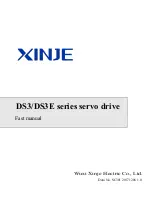
22
Rockwell Automation Publication 2099-UM001D-EN-P - December 2012
Chapter 2
Install the Kinetix 7000 Drive System
System Design Guidelines
To design your enclosure and plan where to mount the system components on the
panel, use this section and the information in the Kinetix Servo Drives
Specifications Technical Data, publication
For online product selection and system configuration tools, including
AutoCAD (DXF) drawings of the product, go to:
http://www.rockwellautomation.com/en/e-tools/
System Mounting Requirements
Follow these system mounting requirements.
•
To comply with UL and CE requirements, the Kinetix 7000 drive system
must be enclosed in a grounded conductive enclosure offering protection
as defined in standard EN 60529 (IEC 529) to NEMA/UL Type IP2X
such that they are not accessible to an operator or unskilled person. A
NEMA/UL Type 4X enclosure exceeds these requirements providing
protection to IP66.
•
The panel you install inside the enclosure for mounting your system
components must be on a flat, rigid, vertical surface that won’t be subjected
to shock, vibration, moisture, oil mist, dust, or corrosive vapors (as
specified in Environmental Specifications on page
).
•
Size the drive enclosure so as not to exceed the maximum ambient
temperature rating. Consider heat dissipation specifications for all drive
components.
•
Segregate input power wiring and motor power cables from control wiring
and motor feedback cables. Use shielded cable for power wiring and
provide a grounded 360° clamp termination.
•
Use high-frequency (HF) bonding techniques to connect the modules,
enclosure, machine frame, and motor housing, and to provide a low-
impedance return path for HF energy and reduce electrical noise.
See the System Design for Control of Electrical Noise Reference Manual,
publication
, to better understand the concept of electrical noise
reduction.
Transformer Selection
The Kinetix 7000 drive does not require an isolation transformer for three-phase
input power. However, a transformer may be required to match the voltage
requirements of the controller to the available service.
















































